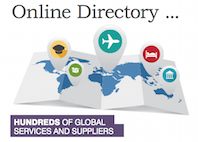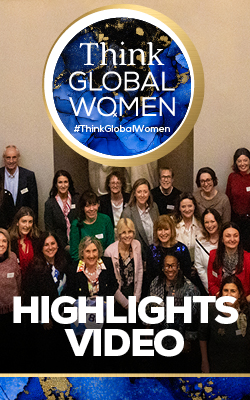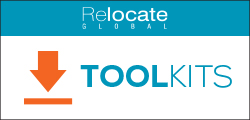International Schools – What global mobility experts need to know
Marianne Curphey talks to Jitin Sethi of L.E.K. Consulting about the education choices and challenges facing parents when it comes to relocating with school-age children.
Education is one of the biggest concerns that parents have while relocating, with the overall cost and quality of childcare and schools a key factor for assignees and their families.Parents can be ‘paralysed by choice’ and unsure about how to go about finding the right educational establishment for their children, says Jitin Sethi, Partner, Global Education Practice at L.E.K. Consulting. To help them, employers and global mobility professionals can work with schools overseas to assist with applications and admissions, and potentially secure discounts for their relocating families.“Twenty years ago, there were not many options for parents but now there is a great deal of choice in key cities such as Singapore, Jakarta, Beijing, Dubai and the UAE,” he says. “In the past, a lot of schools were embassy-linked or were smaller, select providers. Over time, the professional global providers of schooling have seen increasing demand from parents locally for top quality education.”Jitin is based in Singapore and has delivered education cases across the globe and has extensive experience across all education segments, including K-12, Higher Education, Transnational Education, English Language Training, Education Technology and Corporate Training. L.E.K. Consulting is a global management consultancy firm and serves public, private, non-profit and private for-profit educational institutions and also works with investors and foundations that are involved with the education industry.There are three million students enrolled in international curriculum schools overall, with the Premium K-12 market now valued at between $20 and $25 billion US dollars of revenue, he says.Premium schools in developing countries tended to offer the IGCSE and IB. Well-known brands such as Westminster, NLCS, Dulwich College and Malvern College are key players. Nord Anglia (which has 54 international private schools, based in 28 countries), Cognita (which owns and operates schools throughout the United Kingdom, Hong Kong, Singapore, Spain, Thailand, Vietnam, Brazil and Chile) andInspired (with 38,000 students across an international network of over 50 schools) are growing brands. Growth has been driven by governments in countries such as Singapore, Abu Dhabi, and Dubai, recognising the importance of investing in schooling and granting licences to operators.
Jitin Sethi talks about international education at the Festival of Global People:
A good-value option
“One advantage of using the international schools system outside the UK and US is that parents may find educational facilities that are comparable with the best schools at home, but at a lower price,” he says.British schools have set up international schools in Asia and the Middle East providing good quality options for British nationals.“For many brands, the fee for education is higher in the UK,” he says. “This means that parents can get comparable education overseas for their children at a lower cost.”Add to this the value of the typical relocation package and the tax breaks that come with working outside your home country, and the potential package looks very attractive. Additionally, relocation packages nowadays tend to give assignees a total finance package which they can spend at their own discretion, with parents often choosing to spend a proportion of it on education at a top quality international school.“The UK is ranked fourth in cost of international schools across 27 surveyed countries,” he says.For example, Harrow, Malvern, Marlborough College and Westminster have all expanded their brand overseas. Additionally, global platforms are emerging that offer high quality K12 education to parents.GEMS and Nord Anglia are the biggest global brands, he said. These global platforms provide expatriates with schooling options across geographies and price segments. They give parents a brand which carries an assurance of quality, and which they can find in a number of different geographies, he says.“Ten years ago, there was very little choice for parents when they were looking at international schools,” he says. “Now the market is very different. Provision in countries like Singapore, Kuala Lumpur and Dubai has improved tremendously and the market is still evolving.”GEMS has 87 schools across the Middle East, Asia, Europe, Africa and North America. The offering is multi-curricular and there are options across different price segments. Nord Anglia, another major brand, has 54 schools across the Americas, Asia, Middle East and Europe. It operates in the Premium segment with a mainly British curriculum.The new priorities for parents and students
When L.E.K. surveyed parents to find out their priorities, the results were conclusive: parents were looking for good quality teachers from Western countries and wanted a school with a diverse population of children.“Premium schools in emerging markets recruit international talent and ensure good outcomes through quality education and innovative methods of teaching,” he says.Students in international schools are provided a global environment with children from different nationalities.The populations that make up premium/legacy international schools also differ from country to country. For example, in Abu Dhabi Western expats make up 80 per cent of the student population, while locals make up 20 per cent. In Singapore, the provision is very different – in international schools Western expats make up 60 per cent of students, with Asia expats accounting for a future 36 per cent.The proportion of ex-pat teachers varies from country to country and from school to school, with greater numbers present in the Premium sector. For example, in Singapore’s Premium sector 90 to 95 per cent of teachers are Western expats in international schools in select cities. In the mid-range schools, they account for only 50-75 per cent of staff, and in the budget range, it can be as low as 25 to 30 per cent. What’s more, the Premium schools are able to build on large campus sites in developing countries, because they don’t have the land restrictions present in places like the UK.“Top international schools have world-class infrastructure to ensure holistic learning,” he said. “These schools are new, and they are innovative, aware of the need to provide 21stcentury skills, something which many parents say is lacking in the domestic school system. The larger schools have chains across multiple countries and provide a global village eco-system to parents. They are able to develop schools with excellent infrastructure, including multiple playing fields and swimming pools and world-class extra-curricular activities.”The schools and skills of the future
L.E.K.’s research also looked at the criteria by which prospective parents judged a school’s provision.“When we asked parents: Do you think the current education system is completely obsolete? – we were asking a provocative question,” he says. “Yet 30 to 35 per cent agreed and 30–40 per cent were neutral. When we asked what were the educational needs of your child that the current school is not providing for, the main issues were practical learning, social and emotional skills and 21stcentury skills,” he said. “Technology is threatening traditional white-collar roles. Those 21stcentury skills, involving technology, and the social and emotional skills that they will need in the economy of the future, are not being met in many of the current K-12 schools.”International operators also differentiate themselves from other schools with a focus on a strong extra-curricular offering and outstanding facilities:- Beyond academic excellence, operators provide a unique offering by developing a world rounded student with ‘21stcentury skills’ such as, entrepreneurship, leadership, sports, community, creativity, arts etc.
- Global exchanges and joint expeditions involving students from across the world are also offered by some international K-12 brands
- Nord Anglia Int’l has a global tie up with Massachusetts Institute of Technology (MIT)
- This includes summer teacher training courses at MIT for STEAM subjects, an opportunity for students to attend science festivals at MIT, in addition to being able to interact with experts in MIT’s Makerspace
- It also has in-school programs with partner organizations like Imperial College London and Oxfam
Beyond school and on to university
Companies should be mindful that parents want their children to be admitted to top universities which are back at home, he says. This means that families tend to return to their home country, or send their families back home, when their children are older.“The USA and UK lead the way for the maximum number of best universities in the world,” he says. “Parents desire their children to enroll in top class universities, and 45 per cent of the top 200 world-ranked universities are in the UK and US. Another 45 per cent are in Australia and Canada. Therefore, there are key challenges in retaining older children within international schools, particularly post-IGCSE.”How global mobility professionals and employers can add value
There is an opportunity for companies to create value and think about how they can help their assignees abroad, he said. This included:- Relocation support including help with school admissions
- Corporate tie-ups with schools – working with them for admission support and potential discounts for your staff or clients
- Providing university application assistance and counselling – many parents had concerns about how best to apply to prestigious universities
How parents choose a school
While traditionally it had been the preserve of large international school brands, he says that now local operators are moving into the sector in response to demand from a growing middle class in many developing countries.With such diversity in the market, it can be difficult for parents who want to choose the right school for their children. Many use peer review sites and blogs, and make personal visits when they are on location.“The key criteria for parents when they are looking for the right school is for it to have a high proportion of ex-pat teachers, a good diverse mix of students, and quality infrastructure,” he says. (See graph below)Rather than the increasing number of international schools being a threat to UK and US secondary and tertiary education establishments, it actually provides them with a new and large pool of students who are well qualified and better prepared, says Jitin. This is an opportunity which UK, European and US schools can capitalise on.Growth around the world
According to L.E.K. Consulting’s analysis, the international K-12 sector is worth around $14 billion plus in revenue terms and is growing at a 10 per cent compound annual growth rate. This is strongly driven by growing expat populations, increasing affluence and growth of transnational education – students choosing to study somewhere other than their home country. There is likely to be further flows of students from Asia to the UK and US schools in the future, he says.Growing global demand has led to strong growth amongst established brands and companies which provide international schools services. They have leveraged the emerging demand and created multimillion-dollar businesses across diverse price segments – catering to different markets and different expectations. There is now a greater demand for private schools from the local population, with more local children attending thanks to increasing family wealth.Private school enrolment is growing faster than public schools in key markets such as Singapore, UAE, and Vietnam. The other consideration for HR teams, global mobility staff and relocating parents is that international K-12 School fees typically increase faster than inflation.How the markets differ
It is not one single picture across all the geographies. Growth in international schools differs by country and by continent.Middle East: Dubai and Abu Dhabi are among the largest and fastest-growing private K-12 education markets in terms of tuition revenue globally. The private international K-12 market in the Middle East has a revenue scale of $6.8 billion, of which Dubai accounts for $2.3 billion.According to L.E.K. Consulting’s recent report - ‘The Private K-12 Opportunity in The Middle East’, growth has been driven by a favourable regulatory environment, a larger pool of parents who are able and willing to pay for international education and a thriving local and expat population.Asia (overall): There is strong growth in Asia, driven in part by China’s increasing wealth. The private International K-12 market is growing across major cities in China and South East Asia. Overall, the market is worth AUD ten billion, and is growing at a compound annual growth rate of between ten and 15 per cent. In this market, fees have increased by between three and five per cent, which is a two to three per cent premium over inflation.China: In the Chinese market brand is very important. LEK’s research has found that about three-quarters of parents choose education for their children based on brand-related factors.According to L.E.K. Consulting’s report- The Ultimate Consumer Good - Education Trends in China, these factors can include selection based on pure brand recognition and reputation, as well as factors for which brand can be a proxy (particularly in the absence of a long track record), such as academic outcomes and teacher quality (see graph below). The study found that in the premium K-12 segment, foreign brands are growing at double the rate of local brands, demonstrating the importance of brand value and recognition in this market.South East Asia: The Singapore international schools market is worth around SGD 1.6 billion (GBP 0.9 billion) and enrols around 53,000 students annually. In Malaysia, growth has been driven by favourable K-12 regulations which have supported new school openings and operations.Malaysia’s Klang Valley, an area that covers Kuala Lumpur and its adjoining cities and towns, accounts for almost half (45 per cent) of the private K-12 market and is expected to grow marginally faster than the rest of Malaysia over the next five years. There are more than 50,000 students enrolled in international curriculum schools in the region. The international curriculum has been fuelling this growth and has increased by around eight per cent.The beautifully finished 200+ page print edition of the Guide to International Education & Schools is a must read for relocating families and those supporting them. Order yours today.
Learn more about the 2019 Festival of Global People and the Relocate Awards.
Subscribe to Relocate Extra, our monthly newsletter, to get all the latest international assignments and global mobility news.Relocate’s new Global Mobility Toolkit provides free information, practical advice and support for HR, global mobility managers and global teams operating overseas.
 Access hundreds of global services and suppliers in our Online Directory
Access hundreds of global services and suppliers in our Online Directory © 2019. This article appears in the 2019/20 edition of the Guide to International Education & Schools published by Relocate Global, Spray Hill, Hastings Road, Lamberhurst, Kent TN3 8JB. All rights reserved. This publication (or any part thereof) may not be reproduced in any form without the prior written permission of Relocate Global. Relocate Global accepts no liability for the accuracy of the contents or any opinions expressed herein.
© 2019. This article appears in the 2019/20 edition of the Guide to International Education & Schools published by Relocate Global, Spray Hill, Hastings Road, Lamberhurst, Kent TN3 8JB. All rights reserved. This publication (or any part thereof) may not be reproduced in any form without the prior written permission of Relocate Global. Relocate Global accepts no liability for the accuracy of the contents or any opinions expressed herein.©2025 Re:locate magazine, published by Profile Locations, Spray Hill, Hastings Road, Lamberhurst, Kent TN3 8JB. All rights reserved. This publication (or any part thereof) may not be reproduced in any form without the prior written permission of Profile Locations. Profile Locations accepts no liability for the accuracy of the contents or any opinions expressed herein.






































